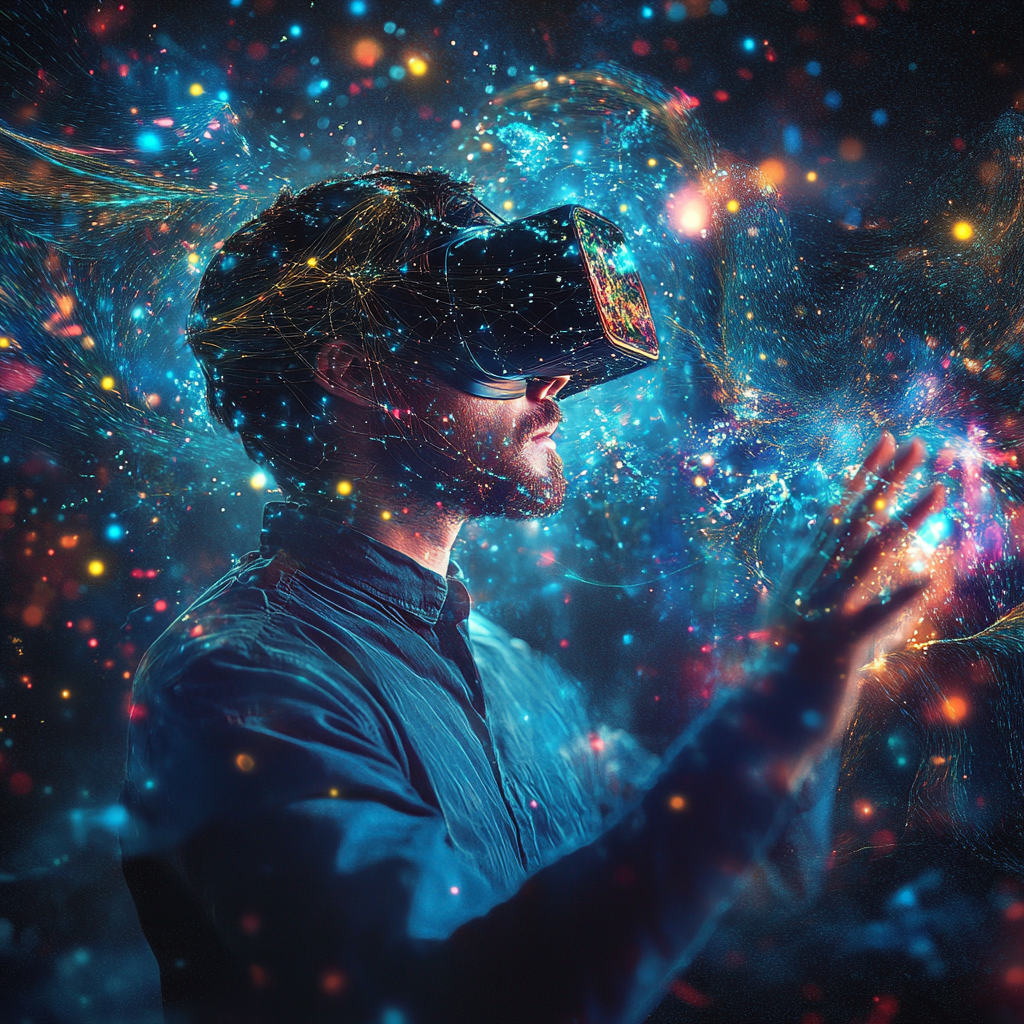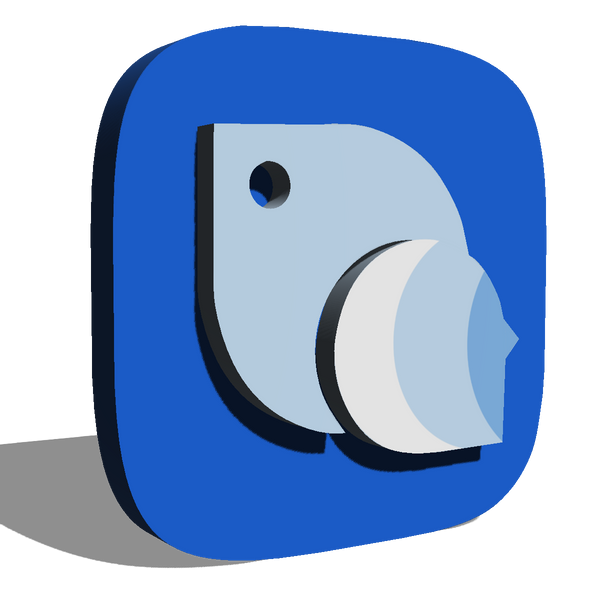
How VR and VR Editors Enhance Interactive Learning Experiences
Share
Introduction
Virtual reality (VR) is no longer a futuristic technology—it's becoming a powerful tool in the educational sector, particularly in creating interactive, immersive learning experiences. When combined with VR editors and AI tools, educators can craft virtual environments where students can explore complex topics in a way that traditional methods can’t replicate. This article delves into how VR and VR editors are enhancing interactive learning experiences, providing students with hands-on, immersive learning opportunities that significantly improve engagement and understanding.
What is Virtual Reality (VR) in Education?
Virtual reality (VR) in education refers to the use of VR technology to create fully immersive, simulated environments where students can interact with the content in a hands-on way. Unlike traditional learning methods, where students observe or read about subjects, VR allows them to experience and manipulate those subjects in a digital world.
In the context of education, VR can be used to simulate a variety of scenarios, from virtual field trips to interactive science experiments or historical recreations. By immersing students in these environments, VR helps them grasp difficult concepts, practice real-world skills, and engage with learning in a way that feels real.
How VR Editors Enhance Learning Experiences
While VR technology provides the platform for immersive experiences, VR editors are the tools that allow educators and students to create, customize, and manipulate those environments. VR editors empower teachers to design virtual lessons that are tailored to their students' needs, making it possible to craft simulations, interactive 3D models, and educational games.
For example, educators can use VR editors to create virtual classrooms where students can interact with objects, conduct experiments, or solve problems in a simulated environment. These editors allow for full customization, enabling educators to create content that aligns with their curriculum while offering an engaging and innovative way to learn.

Benefits of VR and VR Editors in Education
Enhanced Engagement and Motivation: One of the most significant benefits of using VR in education is its ability to captivate students' attention and enhance engagement. Studies have shown that immersive learning experiences increase student motivation, as they become more actively involved in their learning journey. VR takes students out of the traditional classroom and into a fully interactive environment, making learning fun, dynamic, and memorable.
Hands-On Learning and Skill Development: VR allows students to engage in hands-on learning that would otherwise be difficult, expensive, or dangerous in a traditional setting. For example, students can perform complex chemistry experiments, conduct virtual surgeries, or explore historical events firsthand—all within the safety of a virtual environment. These experiences provide a deeper understanding of the subject matter and allow students to develop practical skills that they can apply in the real world.
Improved Retention and Comprehension: Research has shown that students retain information better when they are actively engaged in the learning process. VR's immersive nature helps students experience lessons firsthand, which leads to better retention and comprehension. For instance, a student learning about ancient civilizations could "travel" to a virtual replica of an ancient city and explore its architecture, culture, and daily life, providing them with a more profound understanding of history.
Real-Time Feedback and Adaptation: VR editors, when integrated with AI-driven platforms, can offer real-time feedback to students as they interact with virtual environments. Whether they're conducting a science experiment or solving a math problem, the system can provide instant feedback, helping students correct mistakes and adjust their approach as they learn. This feedback loop enhances the learning experience and allows students to learn at their own pace.
Personalized Learning Paths: VR platforms, combined with AI, allow for the creation of personalized learning paths for each student. By analyzing a student’s progress, the system can offer tailored experiences and challenges to meet their unique needs. Whether a student needs extra practice on a specific topic or is ready to move on to more complex material, VR and AI together ensure that each learner receives the appropriate level of support.
Applications of VR and VR Editors in Education
STEM Education: VR is a powerful tool for STEM (Science, Technology, Engineering, and Mathematics) education, providing students with immersive experiences that enhance their understanding of complex concepts. For example, in a VR chemistry lab, students can conduct experiments with various substances and see the reactions firsthand without the need for costly lab equipment or safety concerns. Similarly, students learning about physics can manipulate forces in a virtual environment to understand how they affect objects in the real world.
Historical and Cultural Exploration: VR enables students to explore historical events and locations, offering them a hands-on experience with history. Students can virtually visit ancient civilizations, walk through historical landmarks, or witness key moments in time. For instance, VR allows students to visit the ruins of ancient Rome or experience the events of the Civil Rights Movement, all while enhancing their understanding of history through interactive elements.
Medical and Vocational Training: VR has a significant role in vocational education and medical training. Medical students can use VR to perform virtual surgeries, diagnose conditions, or practice procedures in a risk-free environment. This allows them to build practical skills without the need for live patients. Similarly, VR can be used in fields like architecture, engineering, and design, where students can interact with 3D models and simulations to practice and develop their skills.
Language Learning: VR and VR editors can also enhance language learning by immersing students in virtual environments where they can practice speaking and interacting in the target language. For example, VR-based language lessons can simulate conversations in real-world scenarios, such as ordering food in a restaurant or negotiating in a business setting. These immersive experiences help students improve their conversational skills and gain confidence in using the language.
8.
The Role of Nibirunbsp;in VR and Interactive Learning
Nibiru is a cutting-edge platform that integrates VR technology with AI to create immersive learning environments. Educators can use Nibiru Creator to design their own VR lessons, simulations, and interactive experiences. Whether it’s a virtual science experiment, a historical reenactment, or a math problem-solving challenge, Nibiru Creator makes it easy to bring complex concepts to life through virtual reality.
By combining the power of VR with AI-driven tools, Nibiru Creator allows educators to design fully personalized, interactive learning experiences that respond to students’ needs in real time. The platform also allows for seamless integration with other educational tools, making it a versatile solution for creating engaging and interactive content.
The Future of VR in Education
The future of VR in education is incredibly promising, with endless possibilities for immersive learning experiences. As VR technology advances, we can expect even more realistic and interactive environments that push the boundaries of traditional education. In the future, we may see fully immersive virtual campuses where students can collaborate, attend lectures, and participate in activities in a completely virtual world.
Moreover, as VR becomes more affordable and accessible, it is likely that more schools and educational institutions will integrate VR into their curricula. The ability to create personalized, interactive learning experiences will help bridge gaps in education and provide students with opportunities to learn in innovative and engaging ways.
VR and VR editors are transforming the educational landscape by providing students with immersive, interactive learning experiences that enhance engagement, comprehension, and skill development. By allowing students to explore complex topics in a hands-on, virtual environment, VR fosters deeper understanding and helps students retain information more effectively. As the technology continues to evolve, VR's role in education will only grow, offering even more exciting possibilities for personalized, interactive learning experiences. With platforms like Nibiru Creator, educators are empowered to create cutting-edge content that prepares students for a future driven by technology.
